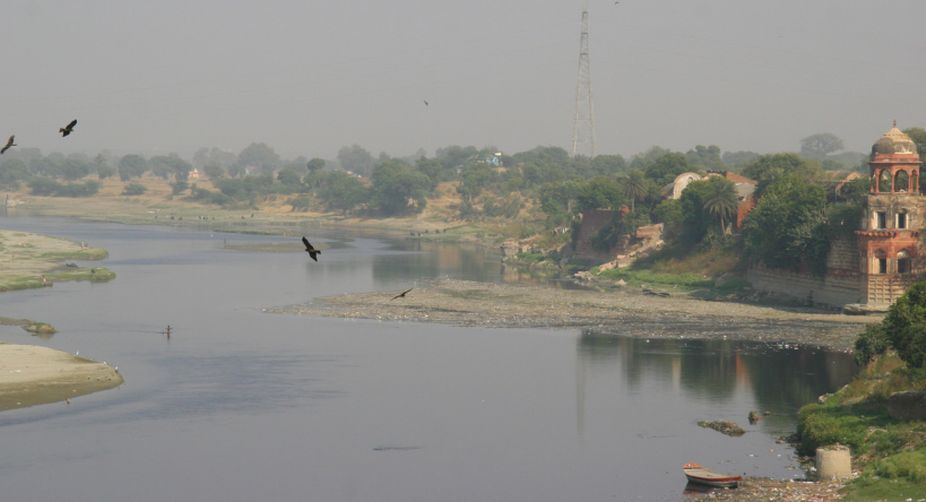A solar unmanned vehicle to monitor water pollution
Water pollution monitoring is a big challenge especially in remote areas. It will not only monitor surface water pollution but also serve many other purposes.
A fresh action plan to clean the river envisages several new affluent treatment plants.

(Getty Images)
“A river is more than an amenity; it is a treasure”.
True to this saying, Haryana, one of the key stakeholders that have geared up for cleaning the Yamuna river that is facing acute water pollution due to domestic and industrial discharge in it, has come out with a fresh Action Plan for keeping the river clean.
Keeping in view the seriousness of the issue, Chief Minister Manohar Lal Khattar and his Delhi counterpart Arvind Kejriwal discussed the issue recently during a meeting in Chandigarh.
Advertisement
Though the main issue of this Khattar-Kejriwal meeting was to discuss the air and water pollution, the Haryana government asked the neighbouring Delhi government to take steps for controlling the pollution the Yamuna witnesses after entering to the National Capital. The Delhi government has said that it was mulling setting up micro-STPs to treat the water going back to Yamuna.
The plan includes, installing of more sewage treatment plants (STPs) and common effluent treatment plants (CETPs) along the drains out falling in and along River Yamuna in Haryana, in addition of laying of sewerage systems in 24 blocks of the state.
As per the data accessed by The Statesman, it includes nearly 48 news STPs including 12 (under construction) while 36 such plants (proposed) while five new CETPs including four (under construction) and one proposed.
For installation of the STPs and CETPs, the Haryana State Pollution Control Board (HSPCB) in its Action Plan has identified six major drains including Dhanaura escape, Main Drain No 2, Drain No 6, a bunch of three drains out falling into Najajgarh drain, Buriya Nallah drain and Gaunchi drain, falling out in River Yamuna in the state of Haryana.
Giving further details, a senior official from the HSPCB said, “The 54.96 kilometer-long Dhanaura Escape, ditch drain of Yamunanagar, which collects the industrial treated effluent of Jagadhri and Yamunanagar, outfalls in Dhanaura escape drain.”
As per the details, there are around 108 water polluting industries established in this stretch and there is no CETP established for the treatment of the industrial effluent, which is getting treated by the industries through their own ETPs. There are around 10 per cent of area still to be sewered by the Public Health Engineering Department (PHED) in these towns.
There is a gap of around 53.5 million litre per day (MLD) to be treated for which PHED is proposing three STPs with a capacity of 54 MLD at Badhi Majra (10 MLD), Parwaloo (24 MLD) and Radaur Road (20 MLD).
While, Radaur Road STP is proposed to be completed by the end of June, 2019 and remaining two STPs at Badhi Majra and Parwaloo are proposed to be completed by 30 September, 2018.
Around 722 water polluting industries are established in the stretch covered by another two such drains (Main Drain No 2 and Drain No 6) with total length of around 62.18 mm and around 44.40 km respectively, mostly in Panipat and Sonipat.
The PHED is proposing one STP at Gharaunda, which is expected to be completed by 31 March,2018 while two more STPs are proposed by the Haryana Shehari Vikas Prathikaran (HSVP), expected to be completed by 31 March, 2018 and 31 December, 2018.
Similarly, for Leg I, Leg II and Leg III (Badshapur Drain) drains from Haryana outfalling into Najafgarh Drain, points of sewerage have been identified were identified as joining in Leg I since no sewerage system is existing in the area, The Urban Local Bodies (ULB) Department has planned one STP is likely to be completed by June 30, 2019.
In Leg II too, 10 points of effluent discharge have been identified while the HSVP has agreed to construct a STP with a capacity of 175 MLD that is expected to be completed by June 2019.
In Leg III, 17 stretch, most of which are large and medium units, which contribute around 72 MLD of treated effluent. Directions are being issued for installation online monitoring devices in all the large and medium water polluting units in the stretch.
For the Buriya Nallah Drain, the ULB Department is proposing two STPs with a capacity of 50 MLD and 40 MLD at Badshapur, expected to be completed by the end of December 2019. Similarly, for Gaunchi Main Drain, nearly five STPs have been planned.
Bahadurgarh, Beri, Gannaur, Gohana, Hodal, Jagadhari, Jhajjar, Kalanaur, Karnal, Kharkhoda, Ladwa, Palwal, Panipat, Rohtak, Samalkha, Sampla, Sohna, Sonipat, Yamunanagar, Hathin, Ferojepur-Jhirka, Nuh, Punhana and Taoru have been identified for laying of sewerage system by the PHED.
The Yamuna flows through Haryana, Delhi and Uttar Pradesh, before merging with the Ganges at Allahabad. It has been recognised as one of the most polluted rivers in India.
Advertisement